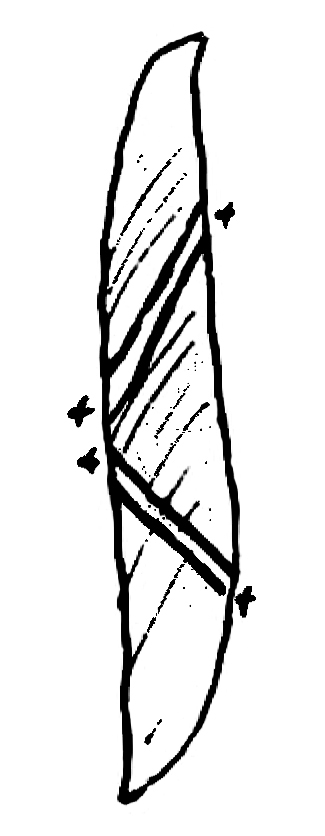From Daniel Oliver 27 November 1863
Royal Gardens Kew
27. Nov. 1863
My dear Sir
It was very kind of you to trouble to send the reference to Wyman’s paper.1 I understood it was in Boston Journal.2 I must look it up next time I go in to the Societies.3
The hygroscopic bundles in pods of Pentaclethra undergo wonderful amount of extension when moistened—increasing about 16 per Cent. It is curious that this extension is in direction of the length of the cells of the contracting & expanding tissue. In Common Pea, Lathyrus &c. the contraction on drying—causing curling up of valves is in direction of breadth of the cells. In wood the principal contraction is also transverse.4 It is curious to cut with scissors the strips marked from pod of sweet Pea dry, & put one of them in water a few minutes & ⟨then⟩ compare.

The directio⟨n of⟩ cells of contracting ⟨tissue⟩ is indicated on inner ⟨surface⟩ of the valves ⟨by the⟩ fine striation. The p⟨ods⟩ shd. be cut to equal le⟨ngth⟩5
I see v. Mohl is wr⟨iting⟩ in Bot. Zeit. on the s⟨mall⟩ hermetic flowers of Oxali⟨s⟩ ⟨ ⟩6
He has made more ⟨ ⟩ obs. than we previously ⟨ ⟩ but seems to attach u⟨ndue⟩ importance to the phen⟨omenon⟩7
If there were any p⟨ods⟩ with these flowers only ⟨ ⟩ might be ground for such.
However he makes out that Fumaria is necessarily a self-fertilizing plant & makes a little flourish about it which by the way I think you have made some observations wh. may enable you to refute him.8
I forget whether you said you had actually found bees carrying pollen of Fumitories.9 But it is too bad of me troubling you about things while so poorly.
Very sincerely yours | Danl. Oliver
I tho’t of noticing Mohl in N.H.R. & would refer to yr. obs. on Fumitory if worth while?10
CD annotations
Please cite as “DCP-LETT-4349,” in Ɛpsilon: The Charles Darwin Collection accessed on